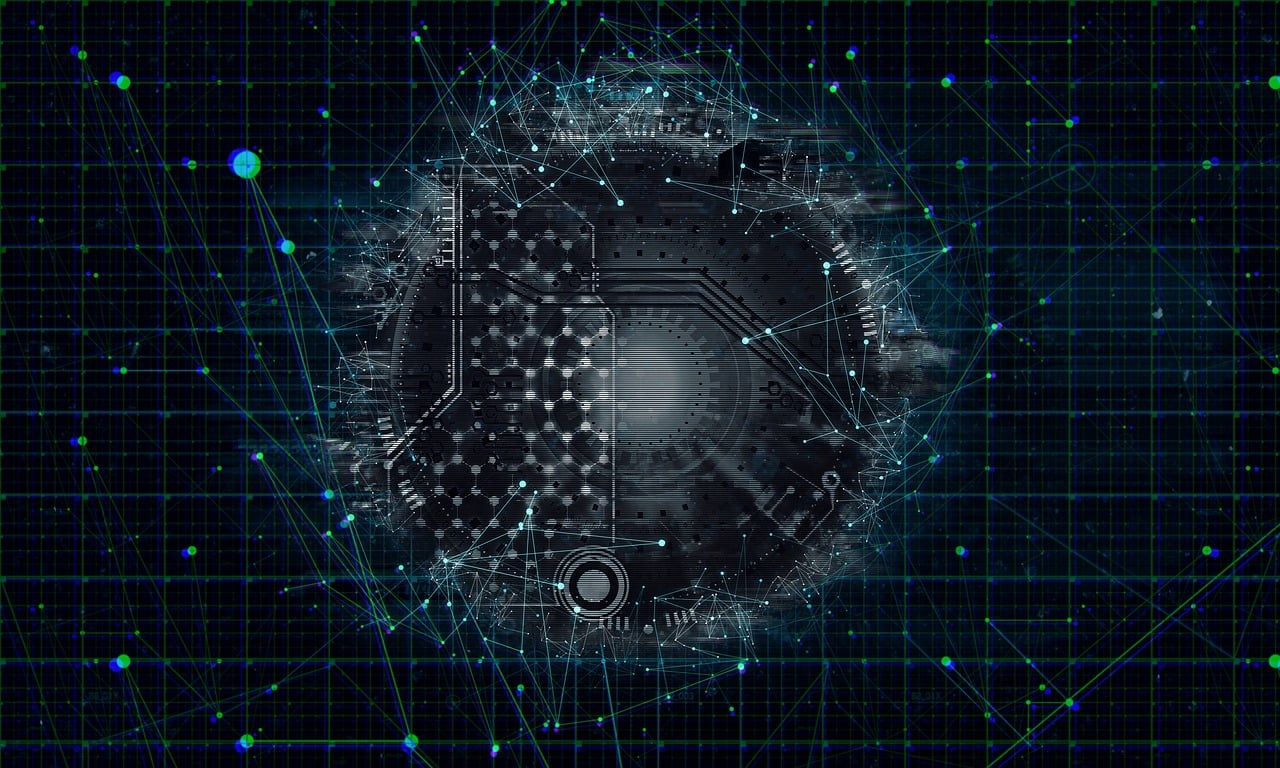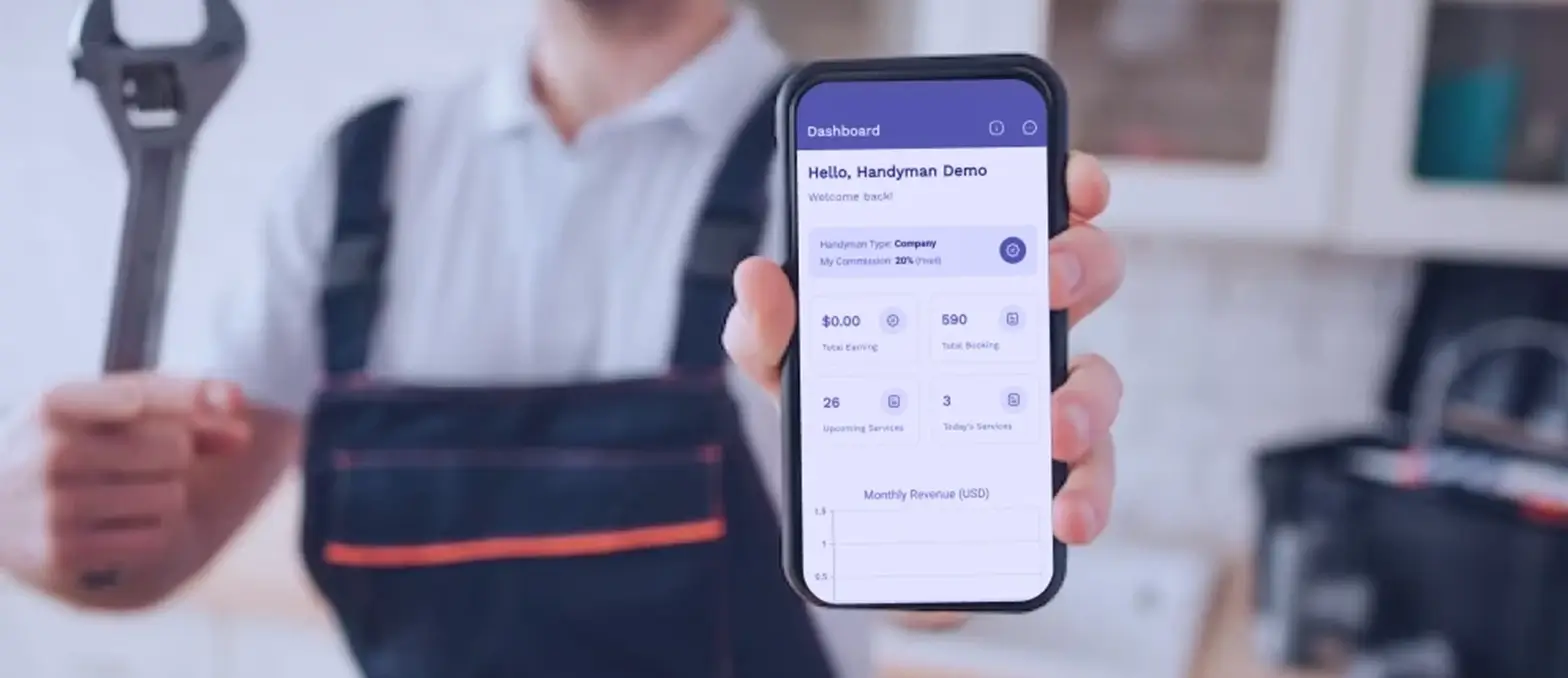Let’s take a moment to survey our surroundings. What do you see? Technology and ingenious devices are everywhere, aren’t they? Such tools are essential in our day-to-day routine. They simplify both our professional and personal tasks. The Internet of Things (IoT) has seamlessly woven into our existence as we pace ahead in this tech-dominated epoch. This revolutionary technology permeates numerous aspects of our life. It helps us monitor our health, control city traffic, streamline office tasks, and operate home appliances. But that’s not all. Devices like wearables, smartphones, appliances, and cars with internet connectivity are no longer considered luxuries. Today, they are commonplace items that most of us possess.
So, how do these devices get online? Generally, they can connect in two ways: through a gateway or by using built-in network features.
At this point, it’s important to bring up the backbone of IoT connections: IoT messaging protocols. Every device that connects to the internet uses certain messaging protocols. These protocols are at different levels to create an internet link. The messaging protocol is crucial. It helps to send messages from the devices to a broker or IoT messaging hub. In simple terms, IoT devices and the internet communicate the same language due to these protocols.
The choice of a messaging protocol in IoT mainly depends on a few factors. These are the type of device, its purpose, and the level at which the protocol works. It’s like picking the best way to communicate based on who or what you’re talking to. This amazing interaction between devices and protocols fuels the IoT system. It makes our devices fit smoothly into our daily routine, turning them into smarter, more connected experiences.
IoT Messaging Application Protocol
Now, as we’ve touched on before, IoT protocols are really important when it comes to IoT application development. These rules make sure messages or data can get from many IoT gadgets to the main IoT messaging center. They do this by working well over the Transmission Control Protocol (TCP). They can work on complex things like Hypertext Transfer Protocol Secure (HTTPS).
To connect IoT gadgets to the big world of the internet or to let the gadgets communicate with each other, we use many methods. These can be things we know, like WiFi and Bluetooth, or even fancy tech like Cellular, Long Range Wide Area Networks (LoRaWAN), ZigBee, and more. Once we have a good setup of parts, an IoT messaging protocol steps in. This lets messages move easily to and from gadgets.
In this piece, we want to dig deep into the amazing world of IoT messaging protocols and how they help make IoT apps. We’ll open up the different types of rules used in lots of fields. This will help us know more about this key part of IoT tech.
So, let’s get ready and start this exciting trip. Hold tight for a fun dive into the core of IoT – its messaging protocol and app-making!
MQTT (Message Queue Telemetry Transport)
In the big universe of the Internet of Things (IoT), a special thing called MQTT (short for Message Queue Telemetry Transport) is very important. It’s like a messenger for IoT, but super small and light. Its job? To carry data to servers through a unique network based on a publish-subscribe system. This cool feature lets us control devices from far away. This is very handy when we’re dealing with lots and lots of small devices.
Think about huge networks. Maybe they are under the sea or in parking sensors, or even in a power grid. This is where an IoT messenger like MQTT is a star! It makes controlling devices over the internet easy. It’s made especially for devices that can’t use a lot of internet or those that need remote control with tiny code footprints.
To explain more about how it works, MQTT usually uses TCP/IP. But it’s flexible! It can work with other IoT protocols as long as they can provide connections that don’t lose information, keep things in order, and work both ways. The best part about MQTT is that it sends messages in a way that doesn’t need immediate responses. Also, these messages are wrapped in specific control packets due to the publish-subscribe system.
Features
- Lightweight, hence great for constrained networks.
- Supports publish-subscribe messaging.
- Low power usage.
- Minimized data packet size.
- OASIS standard protocol.
Pros
- Flexibility to choose the quality of services with the given functionality.
- Lightweight.
- Standardized by OASIS Technical Committee.
- Easy to implement.
Cons
- High power consumption because of TCP-based connection.
- Lack of encryption.
Use
- A parking lot with several parking sensors is installed to find the number and location of vacant parking spots.
MQTT stands as an impactful IoT messaging protocol, widely used and appreciated by numerous IoT development companies for its versatility and ease of implementation. Despite certain drawbacks, it continues to be a promising asset in the ever-evolving landscape of IoT.
AMQP (Advanced Message Queue Protocol)
When it comes to how devices communicate with one another, the Internet of Things (IoT) is guiding the path. At the heart of this are IoT messaging protocols, with AMQP (Advanced Message Queue Protocol) being a leading example. This protocol, open for all to use, is pivotal in making sure transactional messages get from one server to the next.
The design of this protocol springs from its use in messaging applications and various ways of communication. It draws strength from a focus on messages, which allows it to handle a massive number of dependable transactions.
Though, it’s crucial to remember that the AMQP was not made specifically for IoT. Despite this, it works perfectly with IoT situations. Because of this, it has increased the demand for IoT application development services.
The protocol started in the banking industry. They needed a sturdy system to keep track of messages and make sure they reached their destination. Also, this system needed to work even when things went wrong or systems needed to restart.
Features
- Binary application layer.
- Compatible with messaging scenarios.
- Also used for point-to-point and publish-subscribe messaging.
- Supports end-to-end encrypted messages.
Pros
- Messages can be easily sent over TCP and UDP.
- End-to-end encryption.
Cons
- High resource utilization, i.e., power and memory usage.
Use
- AMQP is common in business messaging, where it is used to define devices like mobile handsets communicating with back-office data centers.
AMQP is a common choice among IoT messaging protocols. It is frequently employed in defining devices like mobile handsets that communicate with back-office data centers. This broad application of AMQP in various business processes further emphasizes the growing importance of an IoT application development company in today’s digital landscape.
XMPP (Extensible Messaging and Presence Protocol)
XMPP, which is short for Extensible Messaging and Presence Protocol, was first known as Jabber. It was mainly created for instant messaging, keeping contact lists, and sharing who’s online or not. Built on the flexible and popular Extensible Markup Language (XML), XMPP now has wider use in our tech-rich world. It plays an important role in “IoT messaging protocols,”especially in systems where messages are sent out to many subscribers. Besides, it’s also used in phone calls over the internet (VoIP), video games, and many other modern setups.
XMPP stands out in “IoT messaging protocols” due to its unique way of addressing. This feature ensures smooth data exchange between two devices, no matter how far they are in the network. The system marks devices in the network with a Jabber ID (JID) that matches a standard address. Also, a cool thing about XMPP is that it uses a kind of voting system to decide where messages go when they are sent over a TCP connection.
Just like several “IoT app development companies,” XMPP uses a client-server setup. This starts when the client starts an XML stream by sending an open tag. The server responds with its own XML stream. As an open IoT protocol, anyone can own an XMPP server. So, it doesn’t even need an internet connection to work.
Features
- Designed to be extensible.
- Open standard.
- Client-server architecture.
Pros
- Addressing scheme to identify devices on the network.
- Client-server architecture.
Cons
- Text-based messaging, hence no end-to-end encryption.
- No quality of service provision.
Use
- A smart thermostat with smartphone accessibility and a gaming console with an instant messaging feature between online players.
DDS (Data Distributed Service)
DDS, short for Data Distributed Service, often pops up when we talk about IoT messaging protocols. It’s built on the model of ‘publish-subscribe,’ making it perfect for instant systems. DDS, a standard by Object Management Group for machine-to-machine chats, is unique as it links devices directly. By not involving servers like the MQTT protocol, DDS moves fast.
DDS is a top-notch secure IoT application protocol that doesn’t rely on server chats. It can send millions of messages to several receivers in the blink of an eye. It’s handy for mobile apps, defense, medical gadgets, robots, aerospace, air-traffic control, power creation, self-driving cars, transportation setups, and other instant data-sharing systems. DDS is ready to satisfy the unique needs of each. Its primary goal? To offer reliable, adaptable, high-speed, and compatible data exchange.
Features
- Designed for real-time systems.
- Based on the publish-subscribe model.
- Connects devices directly to each other.
- Low overhead.
Pros
- Flexible and adaptable architecture.
- Low overhead and can be used with high-performance systems.
- Deterministic data delivery.
- Scalable.
- Efficient use of transport bandwidth.
Use
- Medical imaging, military systems, automotive testing, wind farms, and asset-tracking systems.
CoAP (Constrained Application Protocol)
A unique type of IoT messaging tool, known as the Constrained Application Protocol, or simply CoAP, exists. It functions within a client-server framework. Designed thoughtfully for devices with limited resources, it’s perfect for IoT uses.
CoAP lets clients and servers swap information easily via link-free data packages. Thanks to its special design, it uses minimal energy, making it eco-friendly. Moreover, it works even on unstable networks and allows devices to connect to each other or to more nodes on the vast internet.
This IoT messaging protocol isn’t just for transferring data. It’s also a protocol for sending documents that use the User Datagram Protocol (UDP). Although mainly used in IoT settings, it’s not restricted to that. So, it’s adaptable enough to be used for Short Message Service (SMS) in mobile phone networks.
Features
- Uses low power.
- Designed for constrained devices.
Pros
- Uses DTLS for security.
- Faster device-to-device communication.
- Smaller packet size.
- Well-designed protocol.
Cons
- Doesn’t offer a broadcast message facility as it is a one-to-one protocol.
- Reliability is the application’s responsibility.
Use
- Smart energy grids and smart homes.
The growth of IoT app development companies is driving the demand for such protocols. By understanding the functionalities and limitations of IoT messaging protocols like CoAP, these companies can create more efficient and effective apps that make our lives more connected and, in many ways, easier.
The Impact of IoT in Healthcare
These protocols are the unseen force that makes IoT devices work well in healthcare. They make sure data from varied medical devices, patient checkup systems, and health apps are sent accurately and swiftly.
Let’s think about a patient living with a constant condition like diabetes. Devices such as glucose monitors can track the patient’s blood sugar levels round-the-clock and relay this data to healthcare teams in real time. Here’s where IoT messaging protocols work their magic. They direct how this data moves from the patient’s device to the healthcare provider’s system.
In the same way, within a hospital, IoT devices like heart rate trackers, oxygen level sensors, and intelligent beds can gather key data from patients. IoT protocols make sure this data gets to the healthcare staff quickly, helping them act fast to any changes in the patient’s state.
Benefits of IoT in Healthcare
The good things about IoT in healthcare are many. First off, it allows for patient monitoring from afar, which is a great help for patients in far-off areas or those who can’t visit healthcare centers often. So, with IoT devices, they can keep an eye on their health from their homes.
Next, IoT in healthcare means patient care can be custom-made. Since IoT devices can watch a patient’s health all the time, they can give personal data that healthcare teams can use to make treatments fit the patient’s exact needs.
Then, IoT can better disease control a lot. For example, patients living with constant conditions can use IoT devices to watch their health and control their diseases more effectively.
Lastly, IoT can make preventive care better. By watching health data over time, IoT devices can help spot potential health issues before they get worse, enabling early action.
Challenges of IoT in Healthcare
Despite the many good things, using IoT in healthcare has some challenges. One big worry is data safety. With health data being sensitive, making sure it’s safe is very important. IoT devices, since they connect to the internet, are open to cyber attacks, and there’s a chance of data leaks.
Another challenge is too much data. IoT devices create a lot of data, and managing this data can be too much for healthcare teams. They need strong data management and study systems to handle this data well.
Lastly, there’s the matter of interoperability. With lots of IoT devices around, making sure they can communicate with each other well through the same IoT messaging protocols is very important. However, this is easier said than done, as different devices often use different protocols.
The Challenges and Benefits of Combining AI and IoT Technology
AI and IoT are like two peas in a pod. IoT connects gadgets and gathers data, while AI puts that data to good use. Together, they make a team where IoT collects data and AI uses it to make smart choices.
Picture a high-tech home system. IoT gadgets like thermostats, lights, and security cams gather data on the home’s state. AI then studies this data to figure out the homeowner’s habits and likes, tweaking the home’s settings to match. None of this would work without IoT messaging protocols smoothing the data flow between gadgets.
How IoT Messaging Protocols Play a Role in This Combination
IoT messaging protocols are the invisible bond between AI and IoT. They make sure that the data from IoT gadgets get to the AI system accurately and swiftly for study.
Think about a high-tech factory where IoT gadgets might gather data on machine work rate, power use, and production speed. This data needs to reach the AI system in a blink so it can make swift choices, like tweaking machine settings for better power use. This rapid data flow is thanks to IoT messaging protocols.
Benefits and Challenges of This Combination
Mixing AI and IoT brings many perks. It can lead to swifter systems, better decision-making, and improved user experience. For example, in a smart city, AI and IoT can join forces to improve traffic flow, cut down on power use, and make public spaces safer.
But, there are also hurdles. One big one is managing the huge data streams from IoT gadgets. This data needs storing, processing, and studying, all needing sturdy data management setups.
Next, there’s the matter of data security and privacy. As more gadgets connect and data piles up, the threat of data leaks rises. So, robust security measures are a must.
Lastly, there’s the issue of compatibility. With so many IoT gadgets and AI systems, it’s vital they can all chat via the same IoT messaging protocols. However, that’s easier said than done, as different gadgets and systems may use different protocols.
The blend of AI and IoT, helped along by IoT protocols, brings many perks but also poses challenges. Yet, with tech marching on and good strategies in place, we can conquer these hurdles. This paves the way for a future where AI and IoT join forces to craft smart, swift, and user-friendly systems.
The Role of Data Analytics in IoT App Development
Data analytics within the IoT sphere means working with and studying the data produced by IoT gadgets to get useful details. We can use this info to make good choices, foresee trends, and enhance system output.
For instance, an IoT app for a smart home may gather info on energy use, temperature adjustments, and patterns of occupancy. Data analytics can scrutinize this data to find chances for energy saving, refine temperature adjustments for comfort and efficiency, and even predict when the house will be occupied or empty.
However, IoT messaging protocols play an indispensable role in this operation. These protocols make sure the data from IoT gadgets gets transferred to the data analytics system correctly and efficiently.
The Impact of Data Analytics on IoT App Development
Data analytics can affect IoT app creation in several ways. First, it can lead the development process. By looking at user data, creators can learn how users use the app, what aspects they use most, and where they face problems. These insights can inform the development process, assisting creators to enhance the app and make it align more with user needs.
Second, data analytics can boost the usefulness of the IoT app. By studying data from IoT gadgets, the app can offer users valuable details, personalized suggestions, and predictive features. For example, a smart fitness app could examine data from a user’s wearable gadget to offer tailored workout suggestions, predict potential health risks, and track fitness goal progress.
Last, data analytics can boost user experience. By identifying patterns and trends in data, the app can predict user needs and act proactively. For example, a smart home app might learn a user’s daily routine and automatically tweak the home’s settings to match, crafting a smooth and intuitive user experience.
Challenges in Implementing Data Analytics in IoT App Development
While data analytics offers great benefits, using it in IoT app creation has hurdles. One main hurdle is managing the large volume of data from IoT gadgets. This data must be stored, processed, and examined, which needs strong data management and analytics systems.
Another hurdle is ensuring data safety and privacy. Since IoT apps collect and examine sensitive user data, implementing tough safety measures to protect this data is key.
Finally, there’s the hurdle of interoperability. With numerous IoT gadgets and data analytics systems, making sure they can communicate effectively via the same IoT messaging protocols is vital. However, this is often easier said than done, as different gadgets and systems may use different protocols.
Data analytics plays a key role in IoT app creation, leading the creation process, enhancing app usefulness, and improving user experience. But, it also presents hurdles that need addressing. With the right strategies and tech in place, including effective IoT protocols, these hurdles can be overcome, unlocking the full potential of data analytics in IoT app creation.
Ready to take your IoT projects to the next level?
Wrapping It Up!
When diving into the IoT universe, you’ll bump into many IoT messaging protocols. These cater to different operating situations. Your choice of protocol depends a lot on the specific IoT gadgets you aim to include in your solution. Picking one IoT communication protocol as a standard solution is totally doable. Yet, it’s key that you measure the pros and cons carefully.
Each IoT messaging protocol carries special qualities. These can be things like safety, service, and trustworthiness. For example, some protocols might give strong data safety. This makes them fit for apps that deal with secret info. Others may focus more on energy-saving and service trustworthiness. This ensures that IoT gadgets keep working, even in tough situations.
Getting it spot on is a tricky process. And this is where a trusted IoT solutions provider like A3logics comes into the picture. Our know-how in various IoT messaging protocols will steer you to the right setup and solution that suits your needs. With us in charge, feel at ease; your goals will be reached with high efficiency and effectiveness.
FAQ’s
What is an IoT messaging protocol?
An “IoT messaging protocol” refers to specific guidelines that manage the way data moves between devices within an Internet of Things (IoT) network. These protocols play a vital role in IoT systems as they facilitate smooth interaction among a wide range of devices – everything from commonplace household items like refrigerators and thermostats to intricate industrial equipment.
Why are IoT messaging protocols important?
These protocols are indispensable for the efficient functioning of IoT systems. They make sure that data gets transferred correctly, swiftly, and securely among devices. In the absence of these rules, devices in an IoT network would fail to understand each other, resulting in miscommunication and system breakdowns. Moreover, different protocols bring along varied features like low energy use or high-speed data transfer rates, making them fit for specific IoT applications.
What are some common IoT messaging protocols?
Numerous IoT messaging protocols are commonly used, each bringing its unique features, benefits, and drawbacks. Among the most popular ones, we find MQTT (Message Queue Telemetry Transport), AMQP (Advanced Message Queue Protocol), XMPP (Extensible Messaging and Presence Protocol), DDS (Data Distributed Service), and CoAP (Constrained Application Protocol).
What are the pros of MQTT?
MQTT is a widely used IoT messaging protocol celebrated for its lightweight nature and simplicity of implementation. It’s notably useful in situations where network bandwidth is scarce and energy consumption needs curtailing. MQTT employs a publish-subscribe model, allowing effective data distribution to many receivers.
How is IoT impacting healthcare?
From monitoring patients remotely to smart medical devices, IoT technology paves the way for more efficient, personalized, and patient-focused care. For instance, IoT devices can track a patient’s crucial signs continuously and alert healthcare providers if any anomalies get detected. This allows for early intervention and can dramatically enhance patient outcomes.












